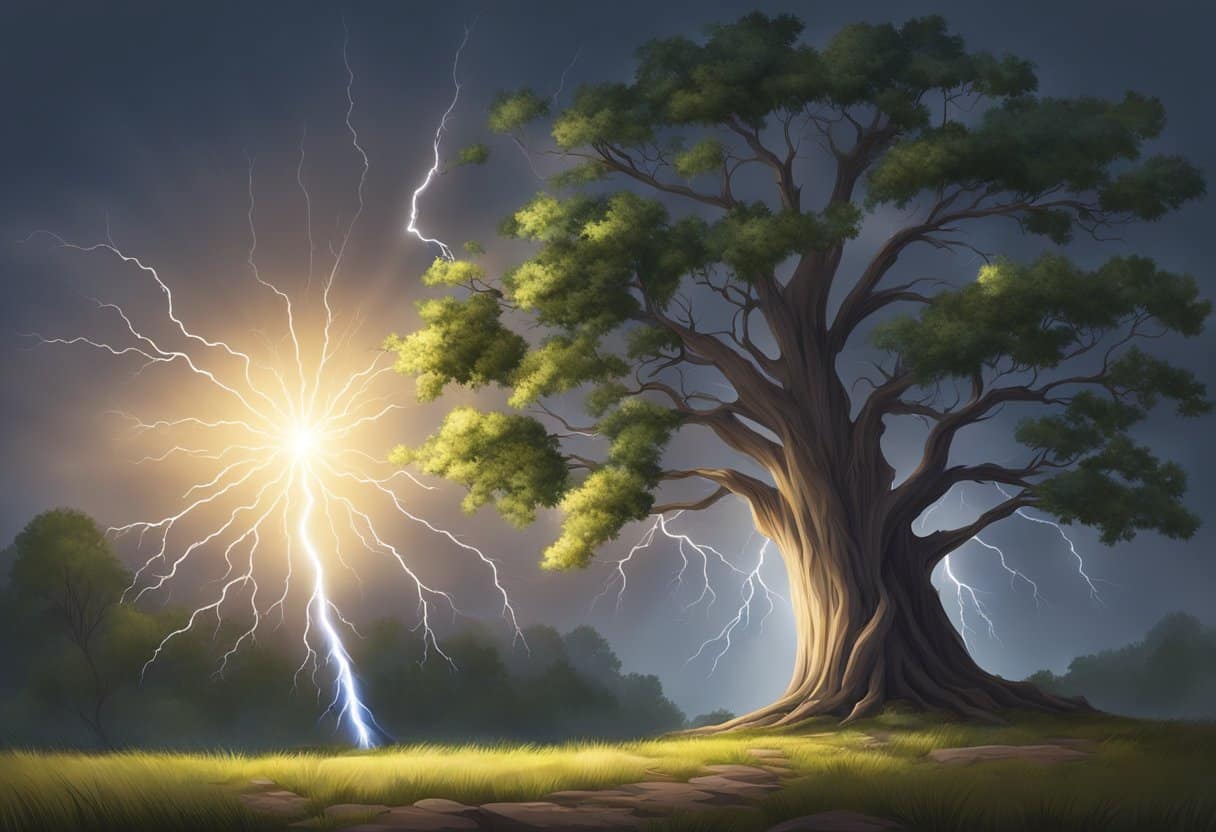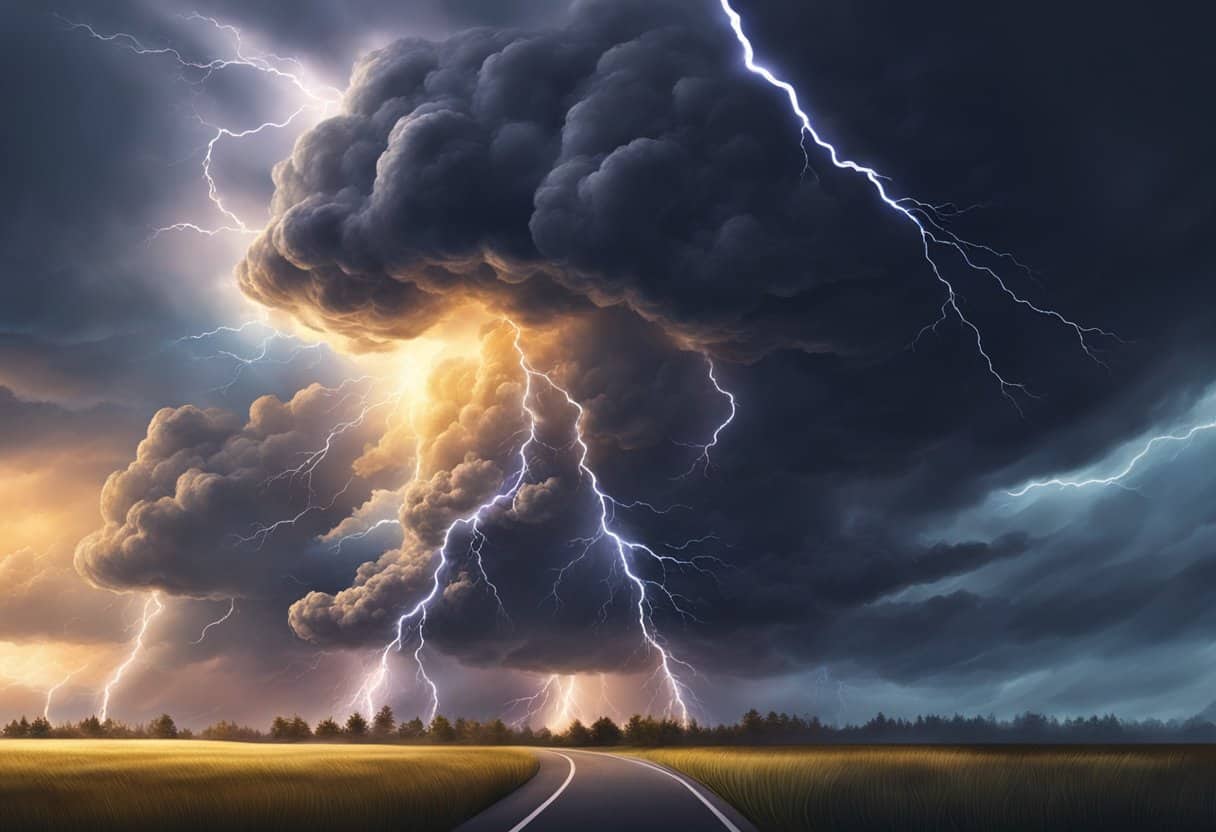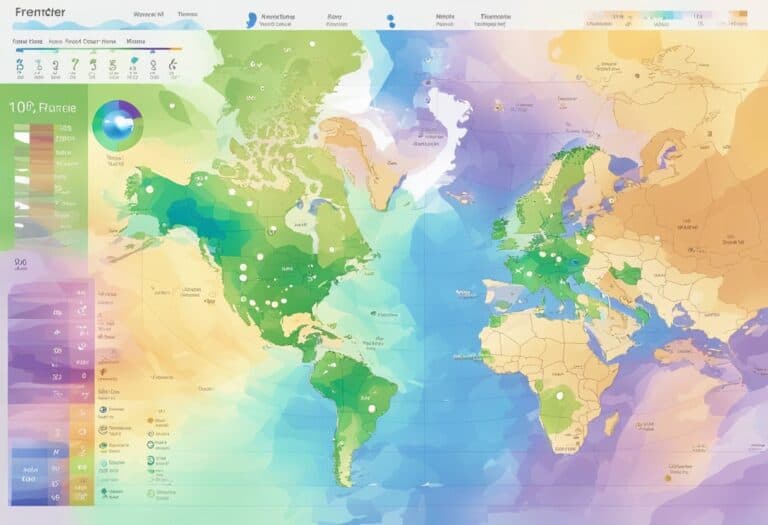Lightning is a powerful natural phenomenon caused by the discharge of electricity in the atmosphere, resulting from the buildup and release of electrical energy between clouds, between a cloud and the ground, or within a single cloud.
This electrical energy is primarily created by the upward and downward movement of air currents, which causes water droplets and ice particles within a cloud to collide and build up static charges. Over time, the differences in electrical potential become strong enough to overcome air resistance, leading to a rapid discharge of electricity—that’s lightning.
The process begins with the separation of positive and negative charges within a cloud. Positive charges typically accumulate near the cloud’s top, while negative charges congregate at the bottom. When the negative charge in the cloud’s base grows strong enough, it can create an electric field strong enough to ionize the air and form a conductive path.
This can result in various types of lightning, such as intra-cloud, cloud-to-cloud, cloud-to-ground, and ground-to-cloud lightning strikes. When the electrical discharge makes contact with the ground or another cloud, it equalizes the charge difference, resulting in the flash and thunder that are characteristic of a lightning strike.
Lightning, a dazzling discharge of electricity in storms, forms when charged regions in clouds (or cloud & ground) overcome air’s resistance, releasing energy as light & sound.
Formation of Lightning
Lightning is a powerful electrical discharge caused by the buildup and release of energy between differently charged areas in a cloud, and sometimes between a cloud and the ground. To understand this natural phenomenon, it’s essential to examine the processes contributing to the electrification of clouds and the formation of charged regions within them.
Electrification of Clouds
During a thunderstorm, the dynamics within the cloud are complex. Updrafts carry water drops and ice crystals upwards, while heavier graupel, which is a form of soft hail, falls. This collision process, along with the freezing of water drops, leads to the transfer of electrical charges. Smaller ice crystals tend to acquire a positive charge and are carried to the upper parts of the cloud by updrafts. Meanwhile, the heavier, negatively charged graupel tends to sink lower in the cloud. These interactions result in an electrification process that separates charges within the cloud.
Positive and Negative Charge Regions
Within the thunderstorm cloud, there exist distinct charge regions. Typically, you’ll find a positively charged area near the top of the cloud, a negatively charged area in the middle, and sometimes a smaller positive charge region near the base. These charge imbalances create an intense electric field within the cloud, and when this electric field becomes strong enough, the air’s resistance to electrical flow is overcome. The air breaks down into ions, and a pathway for discharge forms, allowing current to flow. This discharge is what you see as lightning, a brilliant flash of light, followed by thunder caused by the rapid expansion of heated air.
Types of Lightning
Lightning is a complex natural phenomenon, and its types vary based on the location of the discharge and its electrical properties. As you explore different forms of lightning, you’ll understand how each type contributes to atmospheric electrical activity.
Cloud-to-Ground Lightning
Cloud-to-ground lightning is the most recognized type, notable for the connection it forms between the clouds and the Earth’s surface. This lightning can exhibit either positive or negative charges, governed by the movement of the charge-carrying leader. A negative cloud-to-ground event occurs when a stepped leader moves downward, followed by an upward traveling return stroke that emits bright light.
Intra-Cloud Lightning
Intra-cloud lightning, or lightning that transpires within a single cloud, consists predominantly of negative charges. It typically occurs between the upper (positive) and lower (negative) regions of the cloud. This type doesn’t reach the ground but is essential for charge distribution within the cloud, manifesting as a flash or a broad illumination.
Ball Lightning
The rarest amongst these types is ball lightning, a mysterious and not well-understood phenomenon. It appears as spherical, illuminated objects that can move erratically through the air. Ball lightning’s elusive nature signifies that concrete explanations for its occurrence are not confirmed, making it a fascinating subject for ongoing research.
In each type of lightning, the interaction between positive and negative charges results in the magnificent and powerful release of energy known as a lightning bolt. Moreover, a unique occurrence known as a bolt from the blue can happen, where a lightning strike originates from the clear sky adjacent to the thunderstorm cloud, catching observers off-guard.
Impact of Lightning

When lightning discharges, it not only showcases nature’s raw power but also brings about significant and sometimes hazardous effects. Understanding these impacts is crucial for your safety and the preservation of our environment.
Thunder and Sound
Lightning generates a powerful shock wave as it superheats the air around it to upwards of 20,000 degrees Celsius, resulting in the thunderous sound you hear. Thunder is a direct result of this rapid expansion and contraction, echoing across the sky and sometimes shaking the ground. The time gap between seeing lightning and hearing thunder gives you an idea of the lightning’s distance; every five seconds roughly equals a mile.
Lightning Safety and Risks
Lightning safety is paramount because the risks are real and can be deadly. If you’re outdoors during a thunderstorm, your chance of being struck by lightning significantly increases. It’s advised to avoid trees and other tall structures, as they are prone to attracting lightning. This can lead to tree bursts or, in drier conditions, can ignite forest fires. When lightning threatens, seek shelter immediately in a substantial building or hard-topped vehicle and wait for at least 30 minutes after the last thunderclap before resuming activities. Remember, while the probability may be low, the consequences of a lightning strike can be severe, including injuries or fatalities due to the intense heat and electrical charge.
Measuring and Predicting Lightning
When you’re dealing with the unpredictable nature of weather, understanding and forecasting lightning is crucial. Accurate predictions can help mitigate the risks associated with severe thunderstorms. This section delves into how weather experts forecast these events and the technology that drives detection improvements.
Forecasting Thunderstorms
Forecasting thunderstorms involves analyzing atmospheric conditions to estimate the probability of lightning activity. The National Weather Service (NOAA) uses a combination of satellite data, radar measurements, and ground observations to track storm development. By assessing factors such as humidity levels, atmospheric instability, and electric fields, experts can determine the likelihood of a thunderstorm reaching an area and its potential to produce lightning discharge. The frequency of lightning within a given storm can indicate the intensity and possible energy output, which is critical for safety advisories.
Advances in Detection Technology
Recent advancements in detection technology have led to more precise measurements of lightning distances and characteristics. Electric field meters can now more accurately estimate the distance to a lightning discharge, while networked lightning detectors enable real-time tracking of lightning activity over a broader area, sometimes spanning hundreds of miles. These systems contribute to a better understanding of a storm’s development, leading to more informed decisions and earlier warnings for affected regions. The integration of machine learning algorithms also shows promise for refining predictions and improving response strategies.
Accurate lightning predictions and improved detection technology are vital in reducing the impact of severe weather on communities and industries. As detection methods advance, your reliance on accurate weather information becomes ever more integral to safety and planning.
Frequently Asked Questions
In this section, you’ll find answers to common questions about the origins and nature of lightning, providing clarity on this powerful natural event.
How is lightning created in the atmosphere?
Lightning is the result of the buildup and discharge of electrical energy between cloud regions or between a cloud and the ground. This usually occurs when differently charged particles within a cloud, or between clouds and the ground, become significant enough to overcome the insulating properties of the air.
What factors contribute to a lightning strike on an individual?
Lightning strikes on individuals are rare but can be influenced by factors such as a person’s location (higher elevations, open fields), behavior (sheltering under a tree), and the presence of conductive materials (carrying metal objects).
Can lightning occur in places other than the sky, for instance within the earth?
While traditionally associated with thunderstorms, lightning-like discharges can also occur in volcanic eruptions, massive forest fires, surface nuclear detonations, heavy snowstorms, and even large hurricanes.
What are the underlying reasons for lightning and thunder to occur together?
Lightning and thunder are interrelated because lightning heats the air through which it passes, causing it to expand rapidly. This rapid expansion creates a shock wave that manifests as the thunder you hear shortly after the lightning flashes.
In what ways can lightning be considered a natural phenomenon?
Lightning is a natural electrostatic discharge that occurs during thunderstorms. It is part of Earth’s weather system and plays a role in the planet’s electrical balance. It also helps in the natural production of ozone in the atmosphere.
How can the concept of lightning be explained to children in a simple and understandable manner?
To explain lightning to children, you can say it’s like a giant spark that happens when the sky is stormy. This spark jumps between clouds or between the clouds and the ground, and it’s so strong that it lights up the sky and makes a loud noise called thunder.







